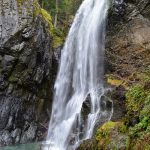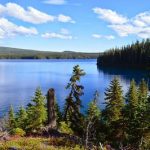Exploring Henline Falls
Cascades of water near an old mine

Gold was first found in the Opal Creek Watershed in 1859. The legacy of the ensuing gold rush left many hillsides up and down the narrow valleys dotted with mine shafts. Silver King — the group of mines near Henline Falls in the Willamette National Forest — today exhibits little of what was once a bustling mining operation. The exception is a 1,700-foot-long shaft right next to the falls. Over the years silver, lead, zinc and gold were pulled out of the mines near Henline Falls. Thankfully nearly all signs of mining have been washed away. Continue reading
